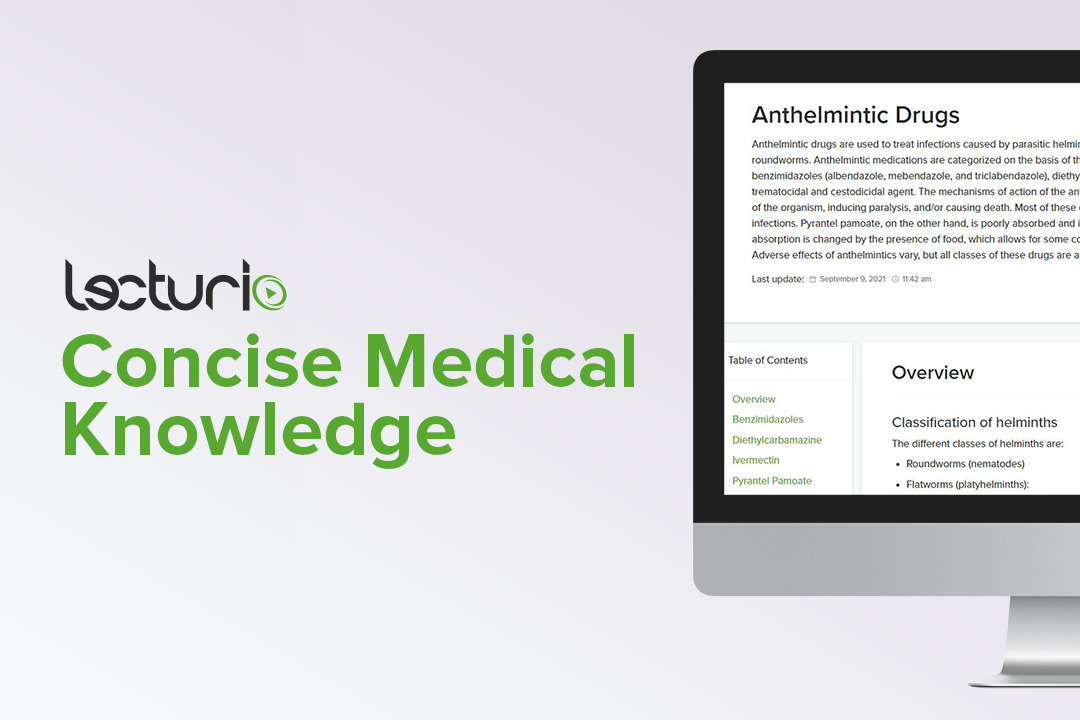Playlist
Show Playlist
Hide Playlist
Questions – Antiprotozoal and Anthelmintic Drugs
-
Slides Questions Antiprotozoal Anthelmintic Drugs.pdf
-
Reference List Pharmacology.pdf
-
Download Lecture Overview
00:00 Okay, let's take a look at a question here. 00:04 The President returns from a first trip to Cuba. 00:08 First time a president has visited Cuba in 50 years. 00:12 He presents with fevers, dehydration and nausea. 00:14 A blood smear shows plasmodium falciparum schizonts. 00:18 The following drugs are schizonticides except: Choloroquine dihydroarteminisin Quinine Halofantrine Sulfonamides The correct answer is E. Sulfonamides. 00:38 Which drug would be effective in treating amebiasis in the liver? Diloxanide furoate Iodoquinol Paromomycin Metronidazole Good, you chose metronidazole. 00:59 So remember metronidazole is particularly effective in systemic infection and it's effective in the liver. 01:06 The treatment of an amebic liver abscess primarily involves metronidazole as the first-line therapy, followed by a luminal amebicide like paromomycin or iodoquinol to prevent recurrence. In cases of large abscesses or those at risk of rupture, percutaneous drainage may be necessary, with surgical drainage reserved for refractory cases. 01:31 The principle behind amebicidal therapy is understanding where each drug works. 01:36 The first three drugs are luminal amebicides. 01:39 They stay in the lumen of the gut and work very well there. 01:43 If the infestation is at the luminal surface that is. 01:46 Once the organism becomes systemic, metronidazole would be the logical choice. 01:51 As it's activated by anaerobes and it's very, very effective in hepatic tissues. 01:58 While on mission with Medecins sans Frontieres or Doctors without Borders, you see a young boy with a strange lump in his retina. 02:07 It is a small cyst with a hard center. 02:17 What would be the appropriate treatment for that finding? Niclosamide Praziquantel Mebendazole Albendazole. 02:28 Good, you chose aldbendazole. 02:30 So the image is a typical presentation of retinal cysticercosis. 02:36 The larval stage of pork tapeworm. 02:39 Niclosamide does not kill pork tapeworm in this stage. 02:43 It only kills it in the cestode stage. 02:46 Praziquantel should never be used in ocular cysticercosis because the destruction of the organism can actually cause permanent ocular lesions. 02:57 Mebendazole is not systemically absorbed to any great a deal any great degree and it's therefore not a great choice. 03:05 Albendazole is the drug of choice in ocular cysticercosis but its use should be carefully managed to avoid exacerbating inflammation due to the immune response triggered by the dying parasites, often with the addition of corticosteroids. 03:22 You made it through this lecture. 03:24 You did really well. 03:25 I'm glad to say that nobody got sick looking at these wonderful pictures. 03:29 And you made it through our pharmacology lecture. 03:31 So kudos to you. 03:32 Go write your exam. 03:34 Show them what you know.
About the Lecture
The lecture Questions – Antiprotozoal and Anthelmintic Drugs by Pravin Shukle, MD is from the course Antimicrobial Pharmacology.
Included Quiz Questions
Which statement is correct regarding the management of amebic liver abscess?
- Oral metronidazole is the first-line treatment of amebic liver abscesses.
- Drainage of the abscess contents is a standard component of therapy.
- Treatment is not warranted in cases of uncomplicated amebic liver abscesses.
- Oral antiprotozoal therapy is not as effective as systemic antiprotozoal therapy.
- Intramuscular metronidazole is the alternative therapy.
Which pairing is correct?
- Albendazole : Retinal cysticercosis
- Halofrantrine: Amebic liver abscess
- Paromomycin : Extraintestinal amebiasis
- Praziquantel : Mucormycosis
- Mebendazole : Retinal cysticercosis
Customer reviews
5,0 of 5 stars
| 5 Stars |
|
5 |
| 4 Stars |
|
0 |
| 3 Stars |
|
0 |
| 2 Stars |
|
0 |
| 1 Star |
|
0 |




